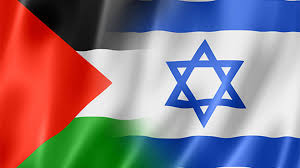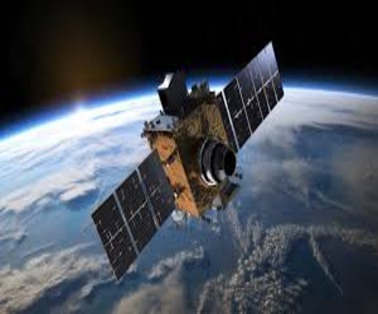The recent escalation of conflict between Israel and Palestine, particularly involving Hamas militants in the Gaza Strip, has once again drawn intense global attention to the region. Understanding the roots, timeline, and current dynamics of the Israel-Palestine conflict is essential to grasp the complexities and stakes involved.
Key Highlights of the Israel and Palestine Conflict
- Amidst escalating tensions, Israel’s defense minister declared a “complete siege” of the Gaza Strip, cutting off essential resources to the territory controlled by Palestinian group Hamas.
- The conflict between Israel and Hamas has included major military operations such as Operation Cast Lead (2008-2009), Operation Pillar of Defense (2012), and Operation Protective Edge (2014).
- In 2021, tensions surged over Israeli policies in Jerusalem, including the eviction plans targeting Palestinian families in Sheikh Jarrah and restricted access to the Al-Aqsa Mosque compound, a site sacred to both Palestinians and Israelis.
- The current Israel-Palestine conflict intensified on October 7, 2023, when Hamas launched a surprise attack, firing thousands of rockets into Israel and sending armed militants across the border.
- Israel retaliated with heavy airstrikes on Gaza and prepared for a possible ground invasion, marking one of the fiercest escalations in years.
Gaza Strip: The Epicenter of Israel and Palestine Conflict
The Gaza Strip, a small but densely populated region, lies along the Mediterranean Sea and borders Israel and Egypt. It is home to over 2 million Palestinians and has often been described as an “open-air prison” due to the strict blockade imposed by Israel and Egypt since Hamas took control in 2007.
- The blockade severely restricts the movement of goods and people, contributing to economic hardship, unemployment, and humanitarian crises in Gaza.
- The blockade’s roots trace back to the aftermath of the Six-Day War in 1967, when Israel captured Gaza from Egypt.
Historical Timeline of the Israel and Palestine Dispute
| Year | Event | Significance |
| 1897 | Zionist Movement Begins | Jewish community’s effort to establish a state in Palestine, leading to increased Jewish immigration. |
| 1916 | Sykes-Picot Agreement | Britain and France divided Ottoman territories, placing Palestine under British control. |
| 1917 | Balfour Declaration | Britain expressed support for a Jewish “national home” in Palestine. |
| 1947 | UN Partition Plan | Proposed independent Jewish and Arab states; accepted by Jews but rejected by Arabs. |
| 1948-49 | First Arab-Israeli War | Israel declared independence; surrounding Arab states attacked; large Palestinian displacement. |
| 1967 | Six-Day War | Israel captured Gaza, West Bank, and other territories, intensifying the occupation. |
| 1987 | First Intifada | Palestinian uprising against Israeli control; led to Oslo Peace Accords. |
| 2000 | Second Intifada | Renewed violence over stalled peace process and Israeli policies in Palestinian territories. |
| 2008-2014 | Israel-Hamas Wars | Multiple wars between Israel and Hamas in Gaza, causing severe destruction and casualties. |
| 2023 | Current Israel-Hamas Conflict | Hamas launched a large-scale attack on Israel; Israel responded with military operations in Gaza. |
Important Locations in the Israel and Palestine Conflict
- Al-Aqsa Mosque (Haram al-Sharif/Temple Mount): A sacred religious site in Jerusalem for Muslims and Jews alike.
- Sheikh Jarrah: A Palestinian neighborhood in East Jerusalem, central to disputes over evictions and land ownership.
- West Bank: A territory occupied by Israel since 1967, home to many Palestinians and Jewish settlements.
- Gaza Strip: Controlled by Hamas since 2007, under blockade by Israel and Egypt.
- Golan Heights: Captured by Israel from Syria in 1967 and annexed in 1981, internationally disputed.
Demands of Israel and Palestine
Israel’s Key Demands:
- Preserve its identity as a Jewish state with secure borders.
- Recognition of its right to exist and cessation of violence by Palestinians.
- Jerusalem to remain its undivided capital with guaranteed access to holy sites.
Palestine’s Key Demands:
- Establishment of an independent Palestinian state in Gaza, West Bank, and East Jerusalem.
- End to Israeli military occupation and settlement expansion.
- Recognition of East Jerusalem as the capital of Palestine with access to religious sites.
International Involvement in the Israel and Palestine Conflict
India’s Support
- India contributed $2.5 million to the UN Relief and Works Agency for Palestine Refugees (UNRWA) in 2024-25, supporting Palestinian humanitarian aid.
- This aid is seen as a response to Israeli attempts to ban UNRWA from Israeli territory.
Regional and Global Players
- Iran: Supports Palestinian resistance groups like Hamas, recently fired missiles at Israel.
- Hezbollah (Lebanon): Iran-backed group opposing Israel, involved in periodic border clashes.
- Egypt and Jordan: Both have peace treaties with Israel but have complicated relations and act as mediators.
- Houthis (Yemen): Aligned with Iran, have launched attacks supporting Palestinian groups.
- United Nations and International Community: Various peace efforts and resolutions have been attempted over decades with limited success.
Conclusion
The conflict between Israel and Palestine remains one of the world’s most enduring and complex disputes. Rooted in historical grievances, religious significance, and territorial claims, the ongoing violence highlights the urgent need for renewed peace efforts and humanitarian support. Understanding the historical context and current developments is key to grasping the dynamics that shape this volatile region.
To Download Monthly Current Affairs PDF Click here
Click here to get a free demo
Discover all about CLAT Exam



